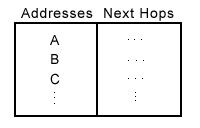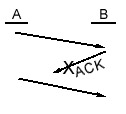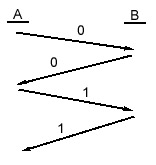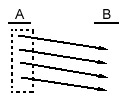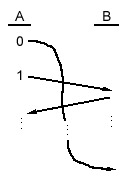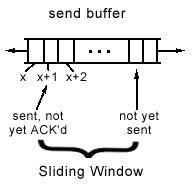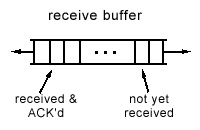| Notes for Monday,
October 7 - second half of lecture
|
|||||
End of section on internetworking... |
|||||
|
- If incoming bandwidth is greater than outgoing bandwidth, we could have a buffer overflow (and drop packets).
|
||||
Section on reliable transmission
We can use the automatic repeat request (ARQ) strategy to implement a reliable link. ARQ uses ACKs and timeouts. |
|
||||
|
- Problem: what if we send a packet with sequence number x and this packet is delayed so that it arrives much later - possibly messing up the sequence number scheme? Suggested fixes: - prevent late delivery - timestamp packets - in order deliveries => Time-to-live (TTL) - set TTL to 256, decrement at each router hop. If 0, drop it and send an error packet to the sender.
|
| An illustration of send and receive buffers in a sliding window implementation: | |||||
|
|
||||
Some variations on sliding window: "selective acknowledgements" and "go back N"
- For the Internet, estimated RTT for the first packet sent is 3-6 seconds.
- After the first packet, estimated RTT is based on measurement
- A problem with RTT measurement is retransmission ambiguity which makes
the RTT appear too short - we try to throw out these measurements.
 |
| Illustration of retransmission ambiguity. |

